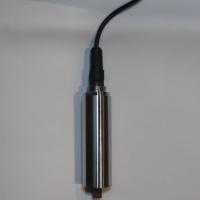Xi'an Desun Uniwill Electronic Technology Co., Ltd.
Xi'an Desun Uniwill Electronic Technology Co., Ltd.is located in
Xi'an High-tech Development Zone. It is a high-tech company
integrating production, research and development, sales and
engineering services. Relying on Xi'an's rich high-tech resources,
we carry out technical cooperation with many universities and
scientific research institutions, constantly break through
technical barriers, improve product performance, and provide
high-quality products for the water quality monitoring industry
with leading technology. We have launched a wireless water quality
monitoring solution based on the current rapidly developing
Internet of Things technology, which combines smart terminals and
traditional display units through wireless transmission to realize
real-time and dynamic water quality monitoring functions such as
data cloud display, remote cloud control, and upper and lower limit
alarms.
Desun Uniwill Electronics has won unanimous praise from domestic
and foreign customers for its high-quality and sincere professional
pre-sale, in-sale and after-sale services. On the basis of
continuous optimization of innovative products, we will strictly
control quality, strictly abide by industry standards, and work
with partners to protect green mountains, green waters, and blue
sky with high-quality products.










